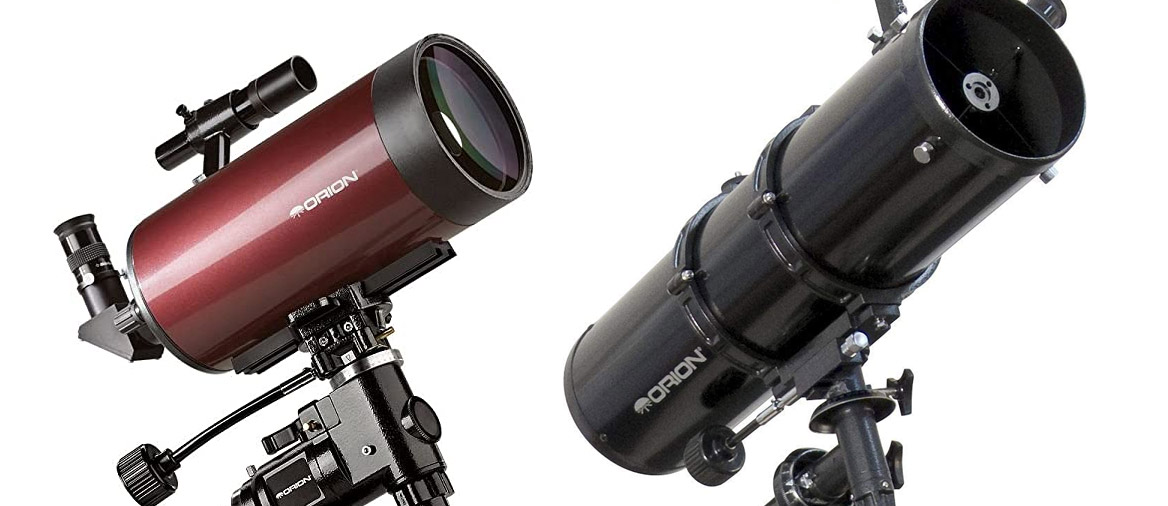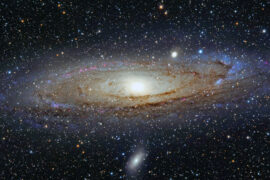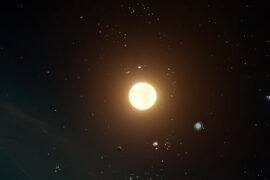Telescopes come in many different apertures, focal lengths, and designs. All the technical specifications and numbers can get overwhelming and it seems hard to really know what you are going to get when you decide to purchase one.
130mm telescopes are some of the most popular models because they are in that sweet spot between high power and reasonable pricing. So we have decided to make a guide on what can you expect from a device in this aperture range.
For practical reasons we are also going to consider 127mm telescopes in this range as they are pretty much the same. The small difference comes because US manufacturers use the round number of 5 inch in their telescopes which translates to 127mm, while European and Asian manufacturers using the metric system make them 130mm to use a round number. In terms of performance, they are pretty much the same so we are going to group them together.
What does the “130mm” mean?
The number you see in a telescope’s name refers to its aperture. The aperture is the diameter of the front lens or mirror. This is the most important piece of a telescope because it’s the lens that is going to capture the light.
The “mm” means millimeters because most manufacturers use the metric system. 130mm equal to 5.11 inches, but as we mentioned earlier, some brands make 127mm telescopes that are exactly 5 inches too.
130mm telescope types. Reflectors vs refractors vs Cassegrain
This aperture range is where you have the greatest number of options when it comes to selecting from different types of telescopes. You will find refractors, Newtonians, Cassegrain, and even a few tabletop Dobsonians.
Which one should you choose?
Our recommendation is to quickly discard refractor telescopes of this size, and not for quality reasons, because they look great, but because this is the range where they start to get really expensive. Because of the design of the lenses, the price of refractors scales exponentially, so they get very expensive really fast. This is why you will mostly see refractors only in the 60mm-110mm range. Unless you have very specific reasons why you’d want a refractor, go with something else.
Some tabletop Dobsonians are also available. The optics are good enough, but for obvious reasons, their mobility and versatility are limited as they don’t use a tripod. Again, unless you specifically want a telescope for indoor use only (which isn’t the best experience for stargazing) we’d also discard those.
That leaves reflectors (or Newtonians) and multiple types of Cassegrains. Both of these are solid options and you can base your selection on your budget or requirements. We will list a few recommendations below.
Pros and Cons
Pros
- Excellent value to price ratio when it comes to optics. Probably the best out of any aperture range along with the 150mm scopes
- Plenty of models, brands, and designs to choose from
- Still light enough to carry on a trip, but almost at the limit of what’s practical.
Cons
- The learning curve for Newtonians and Cassegrains is a bit more steep. As we mentioned above, refractors are not the best option for this aperture.
- They start getting heavier.
- Not practical for small children to use without adult supervision anymore.
What can you expect to see with them
There are multiple variables that affect what objects, how far away you can see, and the quality of the image that you are going to get. It depends not just on the aperture of the telescope, but on its focal length, the eyepiece in use, and even weather and location conditions.
Still, we are going to try to generalize a little bit to give you an idea of the type of images and objects you can expect from a 5 inch / 130mm telescope.
Planets
A 130mm telescope is more than good enough to observe every planet in the Solar system.
Mars is an excellent target for these telescopes. You will be able to recognize its poles, distinguish its different colors, and depending on how close it is to Earth, you might be able to slightly recognize the major geological features.
Jupiter is also a great show with its variety of colors and shades. With good conditions, you should be able to see its larger moons like Ganymede.
Saturn is the planet where you can really tell the difference between a telescope of this size and smaller ones because here’s where you can start to recognize the details and separation in its rings. Saturn’s moons are too small to be recognizable at this point most of the time, but under perfect conditions, you might be able to catch them.
Neptune and Uranus will be visible but they look just like light blue dots and it’s hard to recognize any shades or features.
Pluto is at the limit of what these telescopes can see. You will need almost perfect conditions to be able to observe it and recognizing it is difficult because it pretty much looks just like a dot.
The Moon
The Moon looks absolutely amazing at 130mm aperture. You will be able to see pretty much every crater in high levels of detail. Every geological feature is visible. You will definitely want to grab a Moon filter so you can look at it in all its glory.
Stars
Telescopes with this aperture can reach an approximate limiting magnitude of 14.2. The magnitude is the measure of the brightness of an object as seen from Earth. That includes thousands of stars and every constellation.
Deep space objects
It is definitely possible to see galaxies and nebulas. For the closer galaxies like Andromeda, you might be able to see how the light concentrates at its core and its disk shape.
With a telescope of this power, you can get started with astrophotography and get some great results. Deep space objects are the perfect target for that as they look way better when you photograph them with a long exposure.
Photos taken with 127mm / 130mm telescopes
Here are some photos taken with telescopes in the 127-130mm aperture range. Most of the images shown were taken with a Celestron Nexstar 127
Note that some photographs might have been taken with long exposure times or certain camera settings that might make them look a bit different than what you would actually see through the lens. We have tried to select both, images that reflect the real experience and some that show what you can do if you want to get into astrophotography.
Click the thumbnails for the full-res versions.
Photo credit to Davide Simonetti and Adam Evans
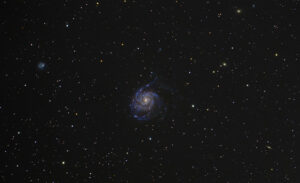
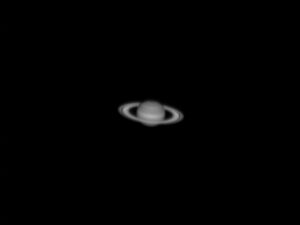
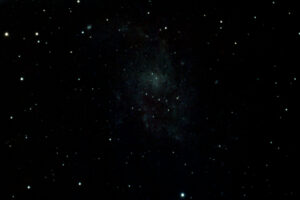
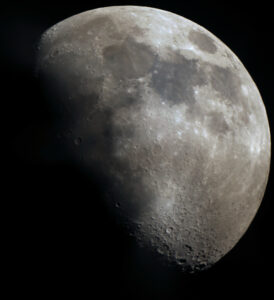
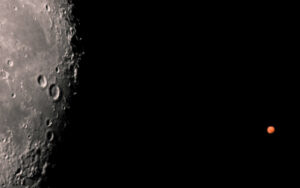
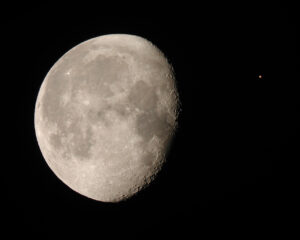
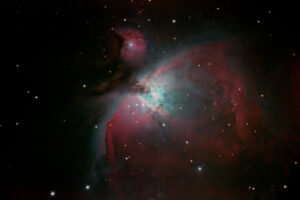
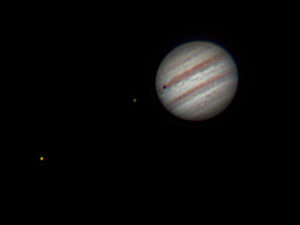
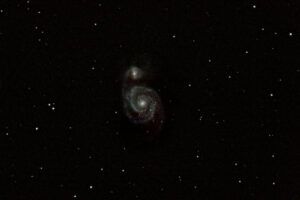
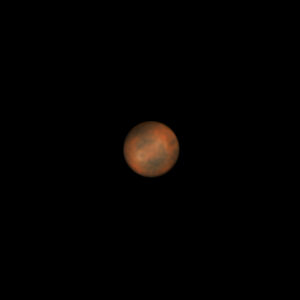
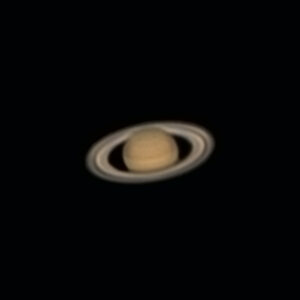
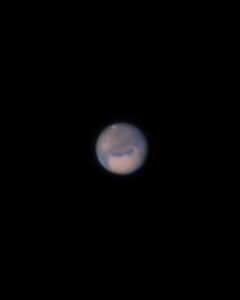
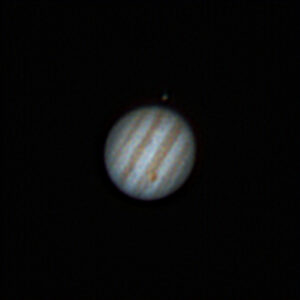
130mm telescope recommendations
Here are a couple of the best 127mm and 130mm telescopes on the market. These should be a great fit for most people looking to either get started with the hobby or who are upgrading from an entry-level 70-100mm scope.
Orion SpaceProbe 130ST
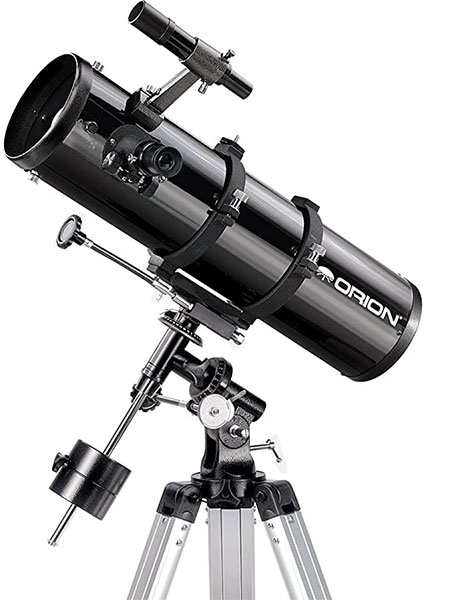
Our first recommendation is a classic mid-range reflector.
Orion is one of the most consistent brands when it comes to quality optics. You can always expect their telescopes to perform great.
This model has become a bit of a classic amongst hobbyists because it offers a solid value to price ratio.
It’s a 130mm reflector with a 24-inch tube and a decent focal length of 650mm.
The equatorial mount is light but sturdy. In fact, this is one of the few 130mm telescopes we’d recommend for travel because it’s so light. For comparison, the Solomark 130EQ that we reviewed recently and has very similar specs is almost 30% heavier.
The included eyepieces are high-quality Plossls of 25mm and 10mm. It does not come with a Barlow lens which is a small drawback, so you will probably want to grab one. It is understandable, though, because the materials and lenses are so high-quality that they probably couldn’t fit extra accessories and still keep the price.
Celestron StarSense DX 130AZ
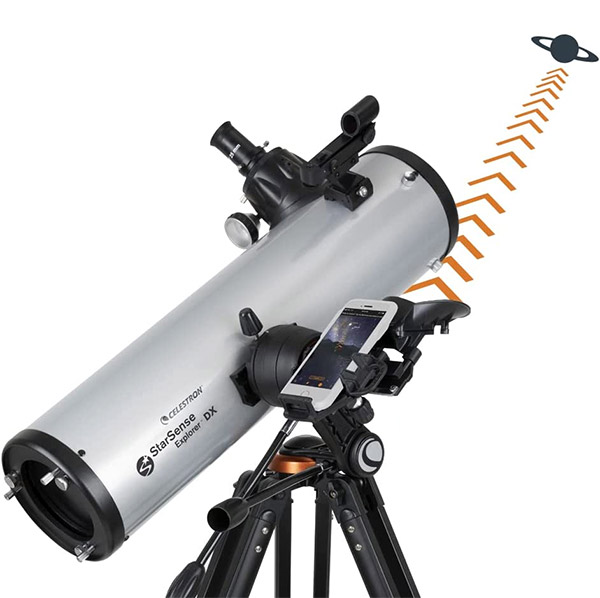
If this is your first telescope then you might want to consider a telescope with some star mapping assistance. Finding the objects that you want to look at when you are a beginner can be difficult and frustrating. You either need to learn to star-hop (drawing imaginary lines and angles from other stars that might or might not be visible that night) or you need to learn about latitudes, and quadrants, and a bunch of other things that just slow you down from actually looking at the pretty things in the sky. This is especially true for galaxies and deep-space objects as they are not visible to the naked eye like planets.
The StarSense line of telescopes fixes this as it comes with an app that triangulates and maps out the sky for you. You simply attach your smartphone to the holder on the telescope’s tube, fire up the app, and follow the instructions to align it. Then you can search in the included database for the visible objects for that night and the app will show you on the screen the directions to the exact location.
Apart from the app, the StarSense DX 130AZ uses the same mirrors and materials as the other Celestron telescopes, so, you know that you’ll get good views and high-quality manufacturing.
The only issue I might have with this model is that it comes with an AZ mount. And while it’s a high-quality DX model it still doesn’t offer the same level of precision as an EQ mount for tracking. It’s a minor detail and you can later upgrade, but for the price, I wish it would just come with it out of the box.
In general, I really recommend the StarSense scopes for first-time users. It just removes so much of the initial learning curve and gets you right into observing, making the experience of buying your first telescope more enjoyable.
Orion StarMax 127mm
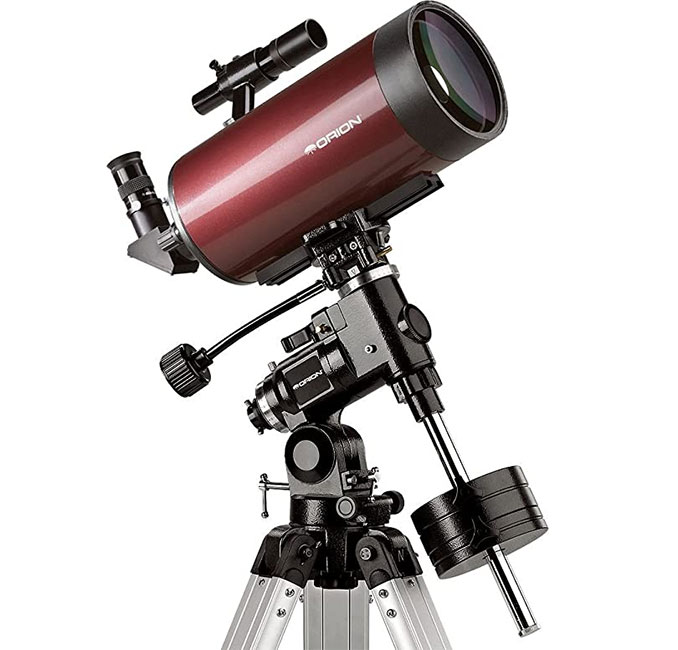
We were torn between choosing this or the Celestron Nexstar 127mm for our pick because they are both so similar in specs and quality, but we went with the StarMax because, at the time of writing this, Celestron is having a bit of trouble with their stock and the Nexstar is not available. Still if for some reason things flip and the StarMax is not available, note that you can’t go wrong with the Nexstar either.
Even though it has a slightly smaller aperture than the reflector above, the StarMax is a bit more sophisticated as it is a Maksutov-Cassegrain telescope and the price reflects it because it is considerably more expensive than the SpaceProbe 130. There’s a good reason for that, though.
Maksutovs, or MAKs for short, pack a lot of power into a small package. They are excellent travel telescopes. For example, this Starmax weighs less than 20 pounds (9 Kg) fully assembled. And still, they can perform not just as well, but in some cases slightly better than a reflector. Think of MAKs and reflectors like laptops and desktop PCs. It’s similar power with the advantage of portability, but at a higher price.
Because of their design, Maksutovs also have a slight advantage when it comes to planetary viewing. Under the same conditions, they will deliver sharper images with better contrast.
The included eyepiece is a 25mm Plossl, and even though this is an excellent telescope, the one negative point it has is that it only includes one, and again, no Barlow lens or smartphone adapter.
Even with that in mind, it is definitely worth the money.

